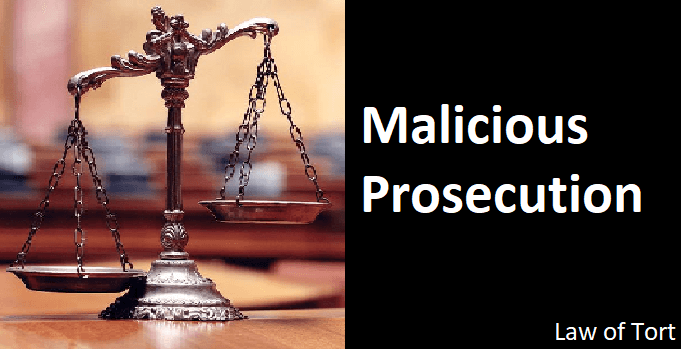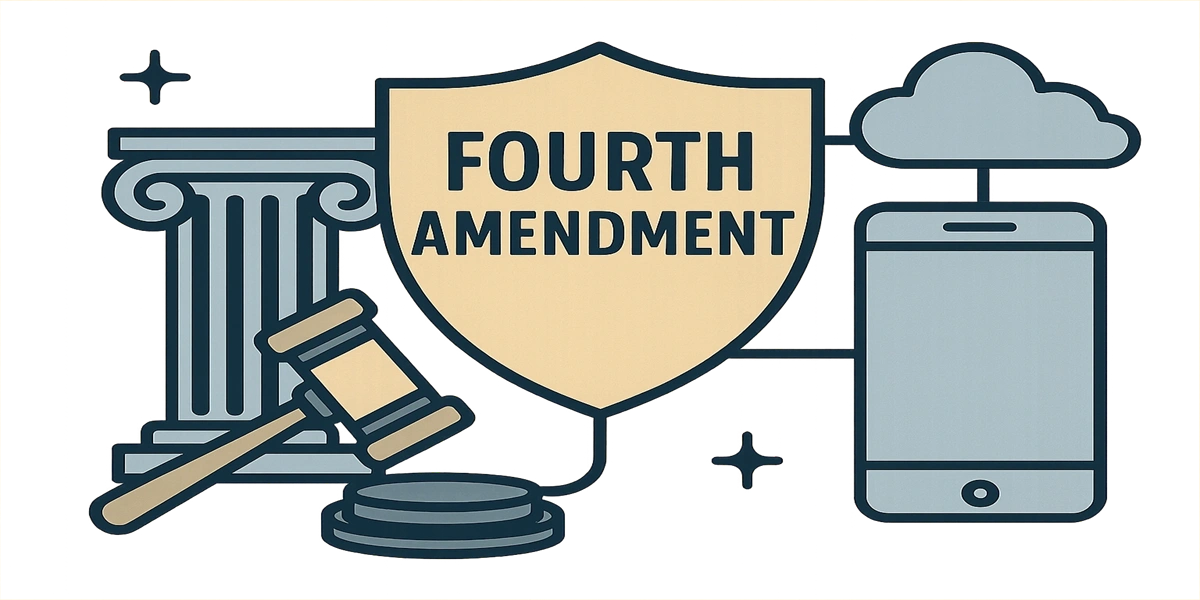A malicious prosecution is defined as “a judicial proceeding instituted by one person against another, from wrongful or improper motive and without probable cause to sustain it.” It is said to be “a prosecution on some charge of crime which is wilful, wanton, or reckless or against the prosecutor’s sense of duty and right, or for ends he knows or is bound to know are wrong and against the dictates of public policy.”
The Apex Court in West Bengal State Electricity Board v. Dilip Kumar Ray, explained that there were two essential elements for constituting a malicious prosecution, namely :-
-that no probable cause existed for instituting the prosecution or suit complained of; and
-that such prosecution or suit terminated in some way favourably to the defendant therein.
Once, a wrongful criminal or civil proceeding instituted for an improper purpose and without probable cause, has ended in the defendant’s favour, he or she may sue for tort damages termed as malicious use of process. Distinguishing between “an action for malicious prosecution and an action for abuse of process”, the Supreme Court explained that :
“a malicious prosecution consists in maliciously causing process to be issued, whereas an abuse of process is the employment of legal process for some purpose other than that which it was intended by the law to effect the improper use of a regularly issued process.”
The Court illustrated that the institution of vexatious civil proceedings known to be groundless was not abuse of process but was governed by substantially the same rules as the malicious prosecution of criminal proceedings.
Where the averments made in plaint are extremely vague, lacking in details, no specific averments regarding malicious prosecution are made or no issues are framed nor any evidence is led to that effect, remedy for malicious prosecution would not lie.
In the instant case, the respondent, an employee of the Board, was suspended and disciplinary proceedings were instituted against him. An F.I.R. was lodged against him alleging misconduct and commission of various offences. Since no charge-sheet was issued for four months, the respondent had approached the High Court for quashing the disciplinary proceedings.
However, on the intervention of the Court, charge-sheet was issued and an inquiry was held. But, the Board resolved not to continue the case further and the orders of suspension of the respondent were quashed. Subsequent thereto the respondent filed a suit in the Court of Assistant District Judge claiming damages for the institution of disciplinary proceedings by the Board as also the newspaper which purportedly made publication of certain news items. The trial court decreed the suit with the finding that it was highly probable that “the plaintiff was suspended for extraneous reasons”. The plaintiff respondent was held entitled to damages for harassment and for loss of his reputation. In appeal before the High Court, filed by the Board, the High Court upheld the award of damages for harassment by treating the same as damages for malicious prosecution causing harassment by way of mental pain also.
The Apex Court, however, held the conclusion drawn by the High Court as confusing, contradictory and not conveying any sense. The Court, thus, set aside the order of the High Court granting damages for malicious prosecution.
Explaining that “malicious prosecution” meant that “the proceedings which were complained of were initiated from a malicious spirit, from an indirect and improper motive and not in furtherance of justice, the Apex Court ruled that the onus of proving that the prosecutor did not act honestly or reasonably did lie on the person prosecuted. There being no specific averment in the plaint, the proceedings taken against him were held not to constitute malicious prosecution. Mere filing of a complaint before Legal Services Authority and subsequent transfer of the same to a Permanent Lok Adalat by order of the
High Court cannot amount to malicious prosecution.
Malicious prosecution consists in instituting unsuccessful criminal proceedings maliciously and without reasonable and probable cause. When such prosecution causes actual damage to the party prosecuted, it is a tort for which he can bring an action.
The law authorizes persons to bring criminals to justice by instituting proceedings against them. If this authority is misused by somebody by wrongfully setting the law in motion for improper purpose, the law discourages the same. To prevent false accusations against innocent persons, an action for malicious prosecution is permitted.
In an action for malicious prosecution, the plaintiff has to prove, first, that he was innocent and that his innocence was pronounced by the tribunal before which the accusation was made; secondly, that there was want of reasonable and probable cause for the prosecution, or, as it may be otherwise stated, that the circumstances of the case were such as to be in the eyes of the judge inconsistent with the existence of reasonable and probable cause; and lastly, that the proceedings of which he complains were initiated in a malicious spirit that is from an indirect and improper motive, and not in furtherance of justice.
The plaintiff has to prove the following essentials in a suit for damages for malicious prosecution :
- That he was prosecuted by the defendant;
- The prosecution was instituted without any reasonable and probable cause;
- The defendant acted maliciously and not with a mere intention of carrying the law into effect;
- The proceedings complained of terminated in favour of the present plaintiff;
- The plaintiff suffered damage as a result of the prosecution.
The Gauhati High Court, in Manik Das V. Dilip Biswas, explained that in a damage suit for malicious prosecution,
“it is important to establish that the plaintiff was unjustly made to suffer criminal charges by the defendants and that the proceeding terminated in favour of the plaintiff. Furthermore, absence of reasonable and probable cause of the criminal prosecution must also to be established and it must be shown that the defendants instituted the prosecution maliciously, for which the plaintiff suffered damage.”
Prosecution by the defendant
This essential ingredient requires the proof of two elements, (i) that there was “prosecution” and (ii) the same was instituted by the defendant.






